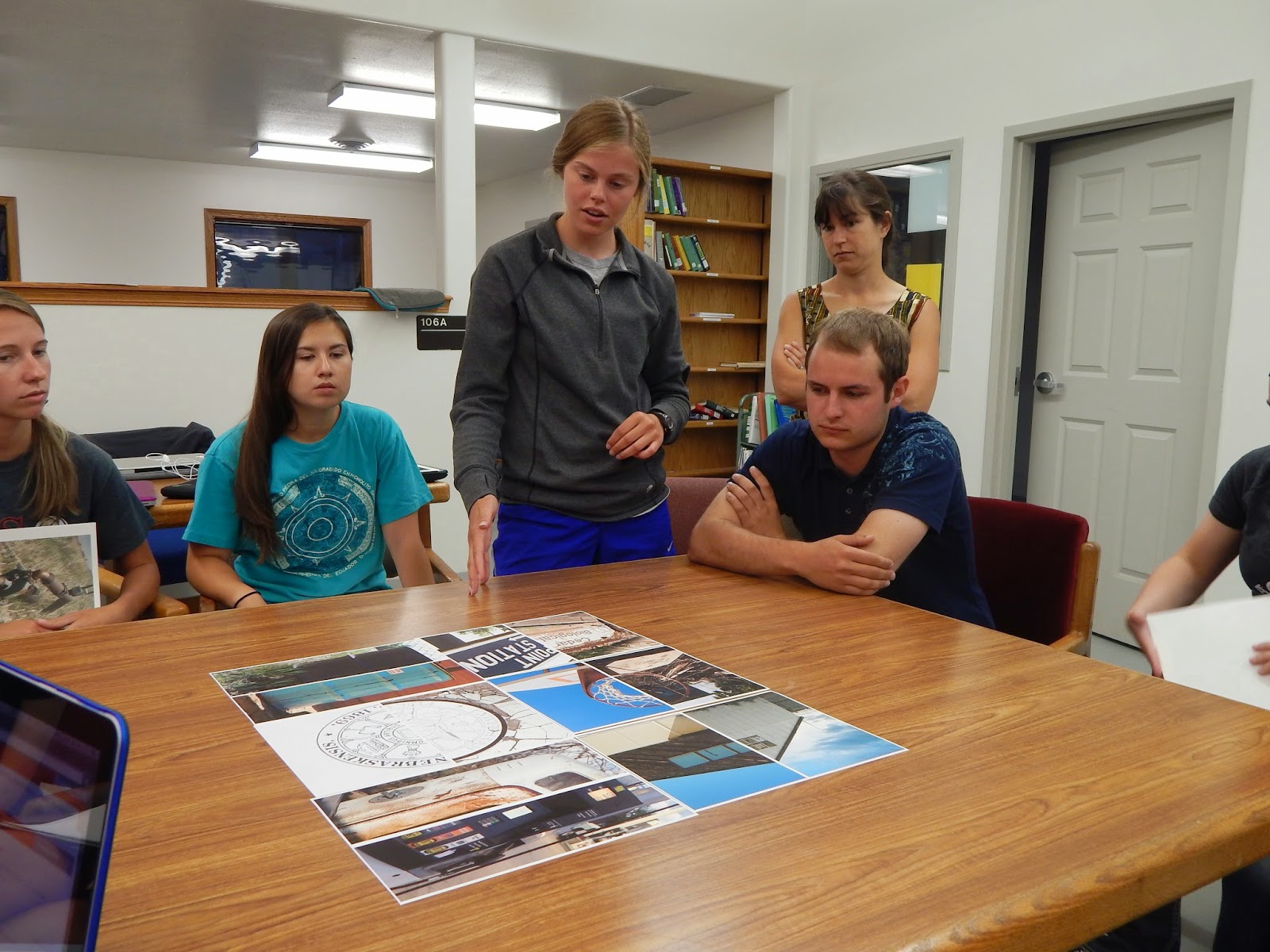By Johnica Morrow
One of my favorite things about this station is our insect collection. The collection has been a part of the station for many years thanks to researchers and students making fairly regular contributions. Last summer, myself and Linden Reed, an intern working at the station who's non-summer job was to work in an insect collection facility in southern Texas, worked to bring together two collections that had been separated by time and to update the taxonomy of many of the insect groups CPBS holds in its collection. After days, she and I looked proudly at our organized work and smiled.
A year later, students in our Life 121 class used the collection heavily to confirm order identifications and to figure out the families of their specimens. Though keying a specimen is the preferable way to identify insects, this class was only doing a small collection and was not a class focused on insects. Having the collection available provided students with a quick and dirty way of putting together a collection that was only worth a small part of their grade for an introductory course.
I couldn't help feeling joyful as students carefully scoured the wooden boxes in search of something similar to their specimens. The students worked hard make sure that their identifications were correct. They also worked hard curating their specimens. Their level of care was evident as I graded their insect collections. Many students chose to keep their collections as points of pride, but others wanted to see their collections integrated into the station's collection for future students to have.
Earlier this week, I finally had time to sort through the student collections, choose the best specimens, print out labels, tag the specimens, and integrate them into the CPBS Entomological Collection. These students left some wonderful specimens that will help many people in the future to do what they had to do for Life 121. The collection was better for identification than any field guide could have ever been. It is a beautiful thing to have here at the station. I wish I had more time to devote to caring for the collection, but I am grateful for the time I was able to spend this week placing these lovely specimens into their new home. Below are some photos of our new arrivals!
 |
| Arctiidae (Moth) |
 |
| Pieridae (Yellow Sulfur Butterfly) |
 |
| Grasshoppers (Acrididae) and Crickets (Gryllidae) |
 |
| True Flies (Diptera) |
 |
| True Bugs (Hemiptera) |
 |
| Beetles (Coleoptera) + Bugs (Hemiptera) and Flies (Diptera) |
 |
| Two Beautiful Tiger Beetles (F. Carabidae S.F. Cicindelinae) |
 |
| Wasps, Bees, and Ants (Hymenoptera) + Beetles (Coleoptera) |
 |
| Bumble Bee! (It's a girl! *Note the Stinger*) |
 |
| Sweat Bee...Also a girl! |
 |
| Dragonflies and Damselflies (Odonata) |
 |
| Lots of Pretty Leps! (Lepidoptera) |
 |
| F. Nymphalidae |
 |
| Bugs from the Side...Mostly Leafhoppers Visible |
 |
New Additions to the Fluid-Preserved Insects:
1 Mayfly (Ephemeroptera), 2 Green Lacewings (Neuroptera), and 8 Caddisflies (Trichoptera) |
 |
| All of the Newbies Ready to be Integrated |



















































